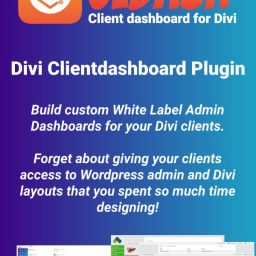The client asked me to do some more research to see “what else might be out there.” For me I was looking for something more user friendly and for them cheaper. That’s when I found Tribulant’s Checkout. The total cost for everything we needed would be $69.00 and still is today. Once installed I found the plugin extremely user friend. Since then, I’ve built about 18 WordPress shopping carts using this plugin.
In November 2015, I found myself having to use WooCommerce as my new client set up their website credit card processing before I was in the picture. Their banker recommended First Data’s new Payezzy program. First Data’s software is included in the Checkout plugin, but the new Payezzy software was not. Nor did Checkout have an extension written at the time. So off into the world of WooCommerce I went. Again, I soon found myself just as unhappy and frustrated with the plugin as I had three years prior.
A few of the main differences for me
WooCommerce
Dislikes:
1. The two tabs, WooCommerce and Products. Why require someone to jump back and forth?
2. Most of their extensions are written by third parties.
3. The cost of their extensions. The Payeezy extension was $79.00.
4. Export and import feature again requires an extension for $79.00. Seems like a basic feature to me.
5. Support is only for those who use WooThemes. You can spend days in the Knowledgebase Articles.
6. Grid/List toggle requires a third party plugin.
Likes:
1. I like the general layout of a product page, specifically, the Product Description. But here again, I think the size of the product image is overwhelming and not easily changed without searching for the correct CSS to change.
2. As it should be in this day and age, a shopping cart icon is built into the software for the header.
Checkout
Likes:
1. Everything with regards to the plugin is under one tab.
2. They write their own extensions.
3. When an extension is necessary, the price of each extension is $16.00.
4. Export and import are built in. As it should be.
5. They work with support tickets. While they are in South Africa, support tickets are answered quickly with the time difference being taken into account.
6. Grid/List toggle build in. Thank you.
7. You can change the size of the product image easily in the Configuration Settings under Products and Images.
Dislikes:
1. I would prefer the layout of the product page in WooCommerce.
2. You have to hardcode in a shopping cart icon.
3. I’m not sure how this works in WooCommerce, but in Checkout you are unable to have a product variation with a quality field. Seems counter intuitive to me, but I did figure out a workaround. It’s just not how I’d prefer things to look.
For my client back in November, had they been able to use Checkout it would have saved them $10.00. Not a lot of difference, but for a non-profit just starting up, every dime counts.
So in the end when I add up the Dislikes and Likes for each plugin, for me, Tribulant’s Checkout wins out hands down.
[product id=13612][product id=11500][product id=14367][product id=14085]






You integrate everything by shortcode. It doesn’t matter whether it’s a Divi builder layout or not. I don’t believe it does integrate with Divi’s Shop module.
I’m looking at buying the unlimited version of Tribulant tomorrow, but I need to know: how do you integrate everything into an existing Divi builder layout? Can elements be dropped in using shortcodes? Does it only integrate on Divi pages/posts that *don’t* use custom layouts? Does it integrate with Divi’s Shop module?
Any specific information on Divi integration would be *greatly* appreciated.
Thanks!
[…] You can read the full article: Why I prefer Tribulant’s Checkout over WooCommerce It was also featured on Elegant Marketplace. […]
Hello Patricia:
I’ve searched for the Tribulant Checkout plugin but can’t find it. I did find one called Tribulant WordPress Shopping Cart Plugin. Is that the one you are using and recommend ?
Here is the link to what I found:
https://tribulant.com/plugins/view/10/wordpress-shopping-cart-plugin
Yes Richard that is the correct one. Sorry for the confusion. If you purchase it the plugin is called Checkout.
Hi Patricia, great article, however I would like to mention one point about WooCommerce import/export. I’m not sure when WordPress added this function (I imagine it was after WooCommerce was acquired by Automattic) but you can export and import products, variations, orders, refunds, etc. using WordPress’ built in export feature and importer plugin. You can now see these options added under Tools >> Export. I used this feature last week and the XML file exported and imported beautifully.
Let me know if you have any questions on this.
I couldn’t agree more! I’ve used WooCommerce to set up a few of my start-up clients’ sites and was very disappointed with the “raved about” WooCommerce… I looked around for something better, but didn’t find Tribulant! I can’t wait to test it out! Thanks for the suggestion and for being bold enough to write an article “against” the Woo, haha. I enjoyed the read!
Cheers!